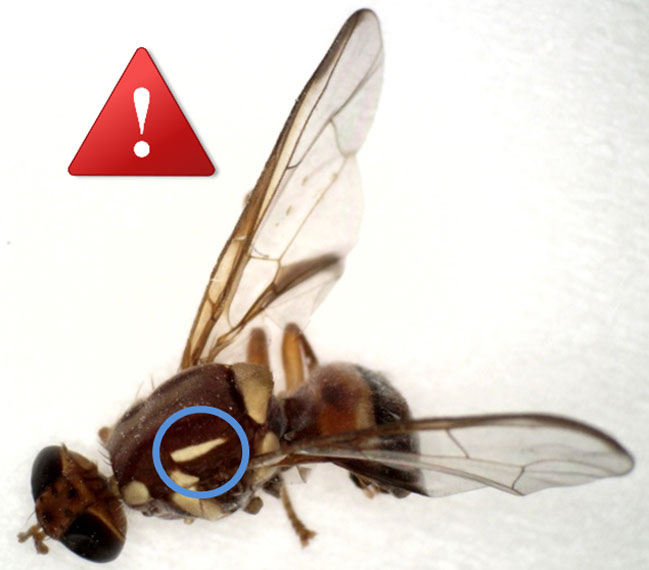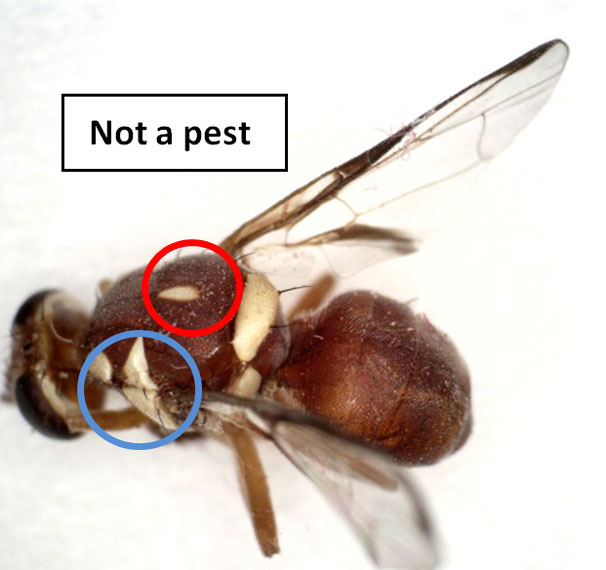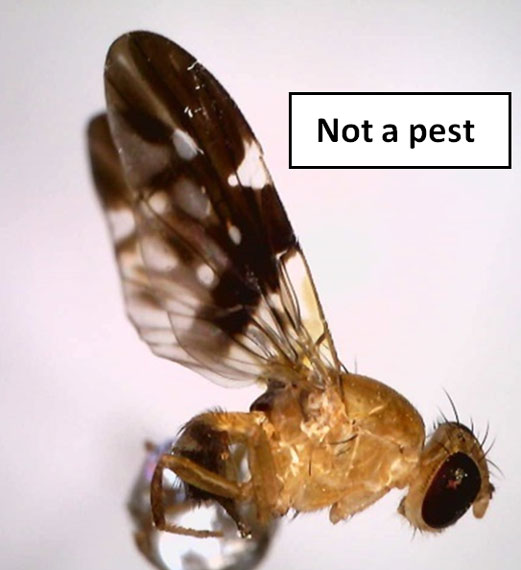
Queensland fruit fly quick guide - monitoring and management



Steven Falivene (NSW DPI) and Greg Moulds (LLS): March 2018
Every export growers in the Riverina and Sunraysia must implement fruit fly monitoring and management strategies. The first step is to monitor for fruit fly and if any are discovered, immediately implement the appropriate control procedures. The following is a quick guide to identifying (Refer Figures 1-3), monitoring and managing Queensland fruit fly. A more detailed guide is available from a fruit fly article in the NSW DPI Citrus plant protection and management guide.
Fruit is most susceptible from the start of colour break (April-May). Active management throughout the season ensures low numbers of fruit fly at high risk periods. Over ripe fruit (i.e. missed during harvest) is highly susceptible.
- To monitor, place a male trap at head height on a 300 to 450 m grid or 10–20 ha and in high risk areas (i.e. shed, house garden, neighbouring property). Male traps are better at attracting flies from a broader distance (> 100 m downwind) than female traps (10 m). Monitor and record trap counts every week from November to May and fortnightly from June to October.
- One sporadic male fly might be a solitary traveller; be on high alert and bait spray in hot spots or high-risk areas.
- More than one male fly can indicate a local problem and, based on the monitoring data, a need to bait spray; check records and assess.
- if bait spraying is required, spray weekly for at least 4 weeks across the orchard since the last detection (ideally bait spray for a 1.5 km radius and encourage participation from neighbouring properties). A pencil/stream nozzle aimed at waist height seems to work best during mild conditions. Apply the spray in every second row and aim to apply 15-20 L of mixture per hectare.
- Try to identify the source by installing additional traps (i.e. in the four corners of the orchard) and look for alternative hosts (e.g. tomatoes, peaches, figs and loquats); treat accordingly (e.g. remove rogue fruit tree and/or clean up fruit).
- Rake or sweep fallen fruit from under the trees into the inter-row and then mulch them.
- Additional action can be installing male annihilation pads (MAT) in the orchard or on the boundary row.
More information is available from:
- Sunraysia: Gregory Moulds (NSW LLS) 0427 311 445
- Riverina: Tammy Galvin (NSW LLS) 0427 221 651
- NSW DPI Citrus plant protection and management guide
- Queensland fruit fly NSW DPI fact sheet
- Fruit Fly - Do's and Don't

